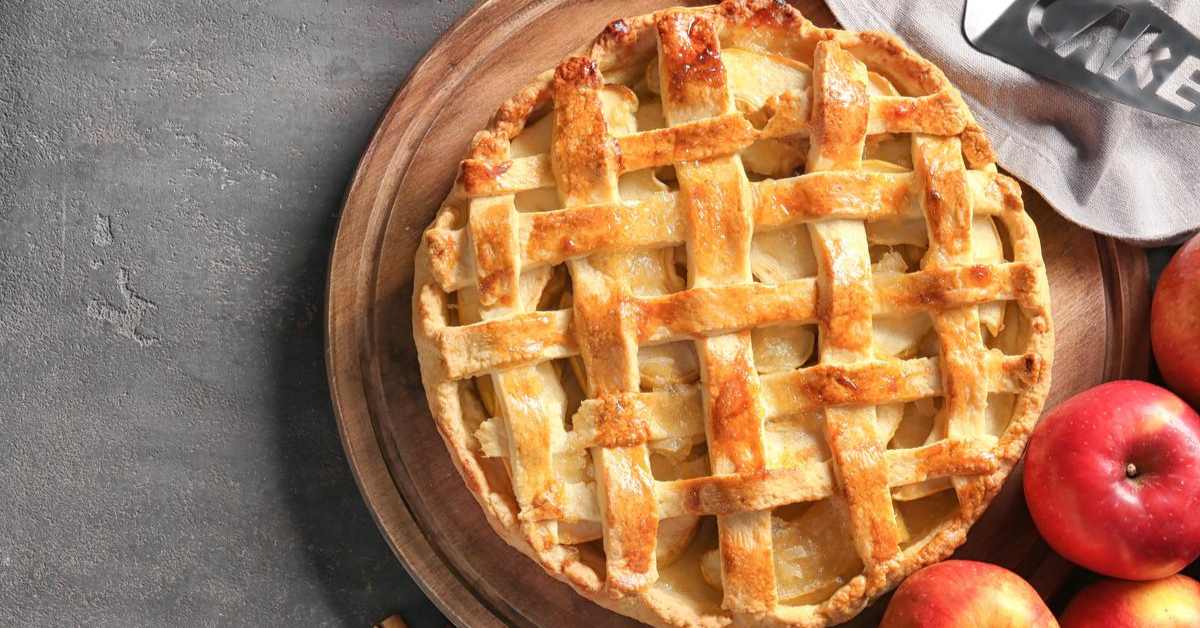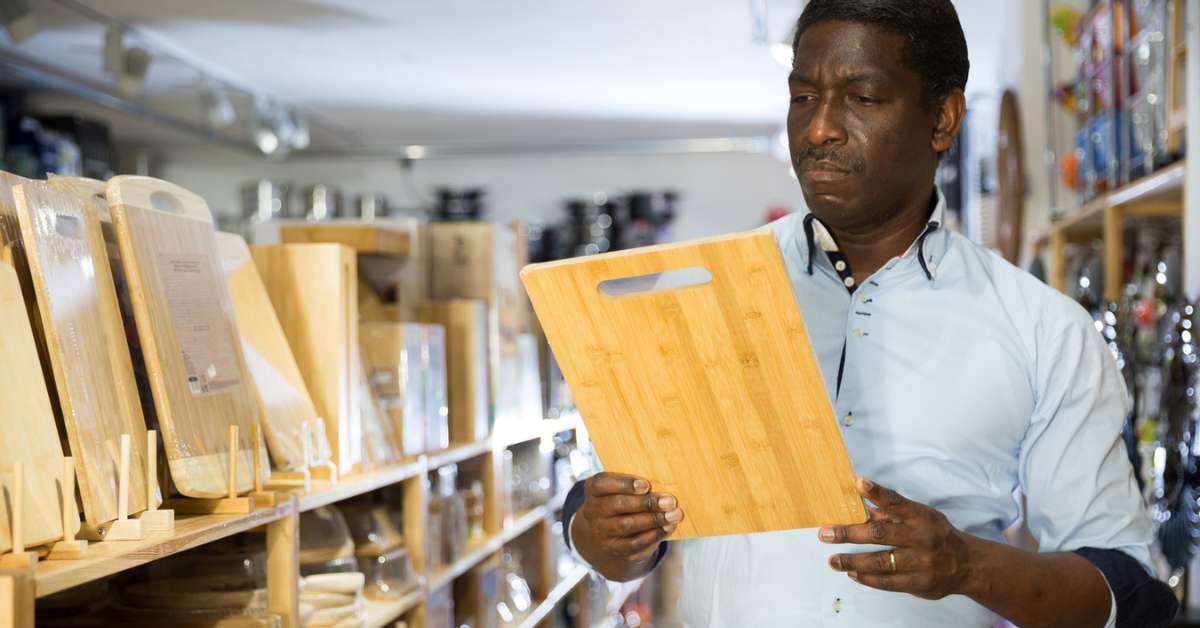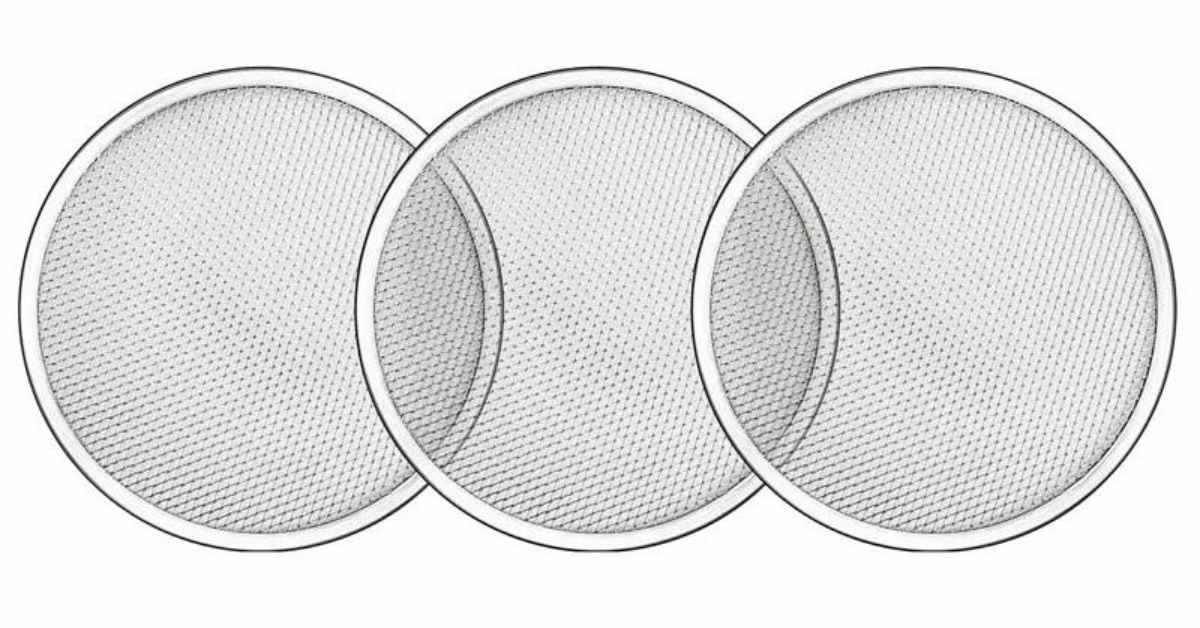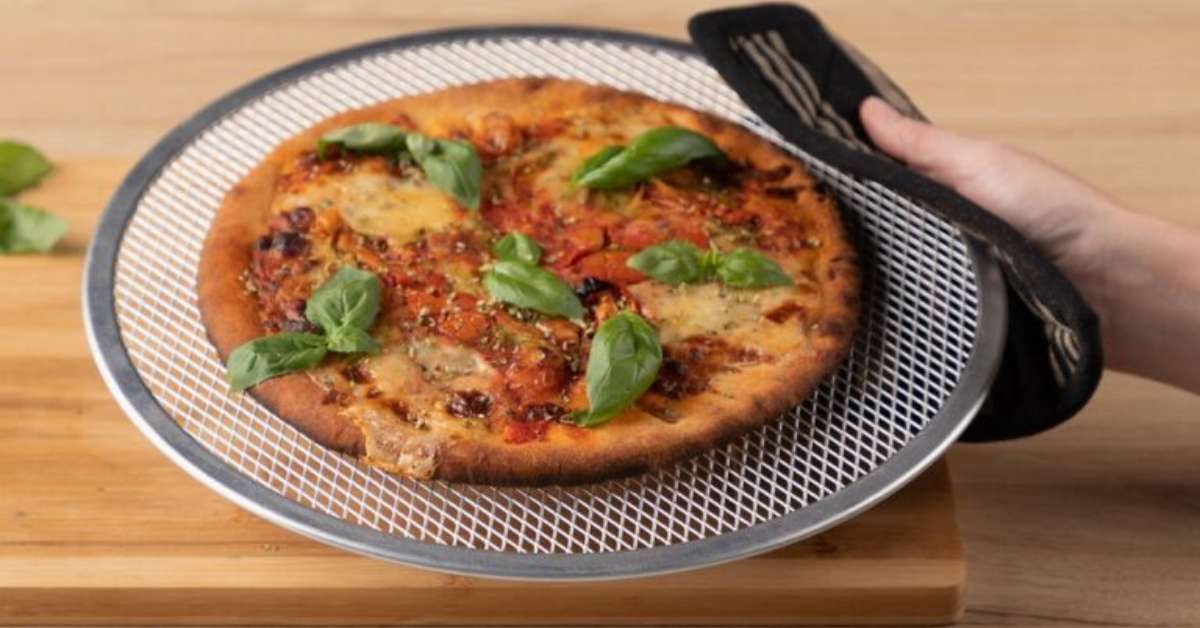Welcome to Foodies Gallery, where culinary creativity knows no bounds! Today, we embark on a delightful and curious adventure in baking. Our question du jour: Can You Make a Pie in a Cake Pan? Picture this: the delicious fusion of a classic pie’s flaky crust and a cake’s moist and tender crumb, all coming together in perfect harmony.
It’s a tempting prospect that has intrigued bakers and food enthusiasts alike. This article explores this unconventional culinary experiment’s possibilities, techniques, and delectable results. So, put on your aprons, and let’s dive into the sweet amalgamation of flavors as we discover whether the boundaries of baking can genuinely be pushed to create something extraordinary. Let the baking adventure begin!
Table of Contents
ToggleThe Anatomy of a Cake Pan
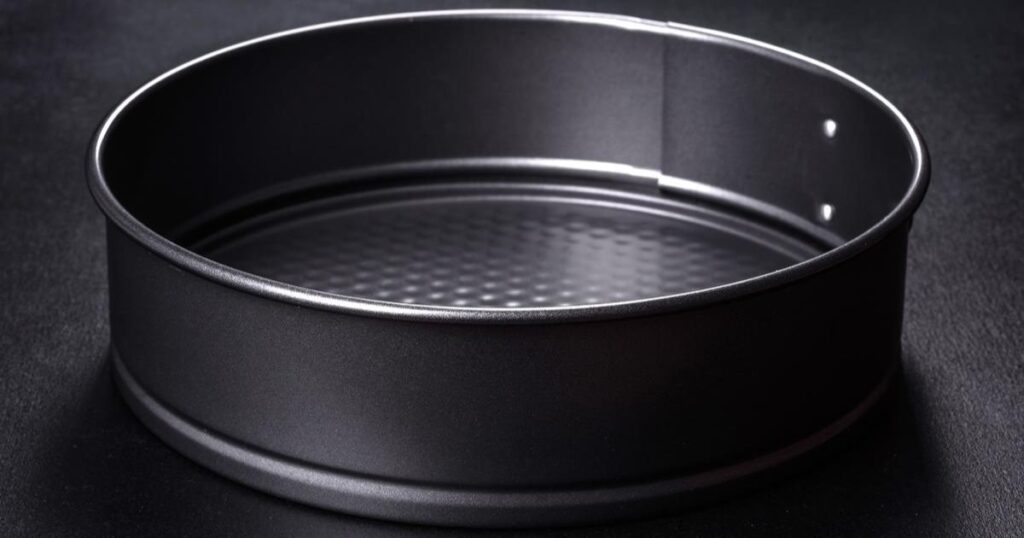
Before we delve into the realm of combining pies and cakes, let’s first understand the fundamental component of our baking endeavor: the cake pan. This unassuming piece of bakeware plays a crucial role in determining the outcome of our culinary creations.
Cake pans come in various shapes, sizes, and materials, each contributing distinct characteristics to the final product. The most common materials used are aluminum, stainless steel, silicone, and non-stick coatings, each with advantages and limitations.
The sides of a cake pan can be straight or slightly angled, influencing the shape and thickness of the baked treat. The pan’s depth also affects the volume and baking time. For instance, a deep cake pan is ideal for multi-layered cakes, while a shallow one may be better suited for airy sponge cakes.
To prevent any unfortunate mishaps, such as a cake sticking to the pan, it’s essential to prepare the cake pan properly. Greasing and flouring the pan or using parchment paper are standard methods to ensure an easy release once the cake is baked to perfection.
As we create a pie in a cake pan, let’s remember how these simple yet critical aspects of the cake pan can impact our baking aspirations. Now, equipped with the knowledge of this baking staple, we’re ready to venture into the world of combining pies and cakes – a realm where innovation and taste collide!
Pie Crusts in a Cake Pan
Ah, the heart and soul of any pie – the crust! The crust takes center stage as we explore the possibility of creating pastries in a cake pan. Traditionally, pies are known for their flaky and buttery crusts, and replicating this goodness in a cake pan requires a delicate touch.
Two primary options for pie crusts are the classic pastry crust and the ever-popular graham cracker crust. The pastry crust, made with a mix of flour, butter, and water, delivers a rich and flaky texture that complements a myriad of pie fillings. On the other hand, the graham cracker crust, a blend of crushed graham crackers, sugar, and butter, boasts a delightful sweetness and a pleasant crumbly consistency.
Pre-baking the crust is often recommended to ensure our pie crusts bake to perfection in the cake pan. This step helps maintain the crust’s integrity, preventing it from becoming soggy when filled with luscious pie fillings.
For adventurous bakers, experimenting with unique crust variations like nut-based or cookie crusts could yield exciting results. The beauty of using a cake pan for pies is that it opens up a world of creativity, inviting us to reimagine classic desserts innovatively.
So, whether you prefer the classic elegance of a pastry crust or the sweet simplicity of a graham cracker crust, the cake pan eagerly awaits to bring your pie crust dreams to life. Let’s take a leap of culinary faith and see what delectable delights await us in the fusion of these two beloved treats!
Filling a Cake Pan with Pie
Now that we have our perfectly baked pie crust nestled in the cake pan, it’s time for the star of the show – the delectable pie filling! This is where creativity knows no bounds, as we can experiment with various flavors and textures to craft a pie that tantalizes the taste buds.
Traditional pie fillings like apple, cherry, and pumpkin are timeless classics, but why stop there? Let’s explore the endless possibilities of combining the essence of pies and cakes. Imagine a luscious lemon meringue pie with a moist cake base or a velvety chocolate cream pie encased in a tender cake layer. Fusing flavors and textures will undoubtedly delight your guests and your taste buds.
To ensure the filling melds harmoniously with the cake pan, it’s essential to consider the pan’s size and depth. The filling should be just right – not too much overflowing or too little to leave the cake pan feeling hollow. Achieving the perfect balance is critical to a successful pie-in-a-cake creation.
As we venture further into this culinary experiment, let’s embrace the spirit of adventure and innovation. Don’t hesitate to play with unexpected flavor combinations, textures, and colors! After all, the beauty of baking lies in the freedom to infuse our creations with a personal touch and leave a lasting impression on everyone fortunate enough to savor the final masterpiece.
So, grab your mixing bowls and measuring spoons, and let your imagination run wild as we embark on this delectable journey of filling a cake pan with pie. The result is a unique dessert that becomes the talk of the town and a cherished favorite for years to come!
Baking Pie in a Cake Pan
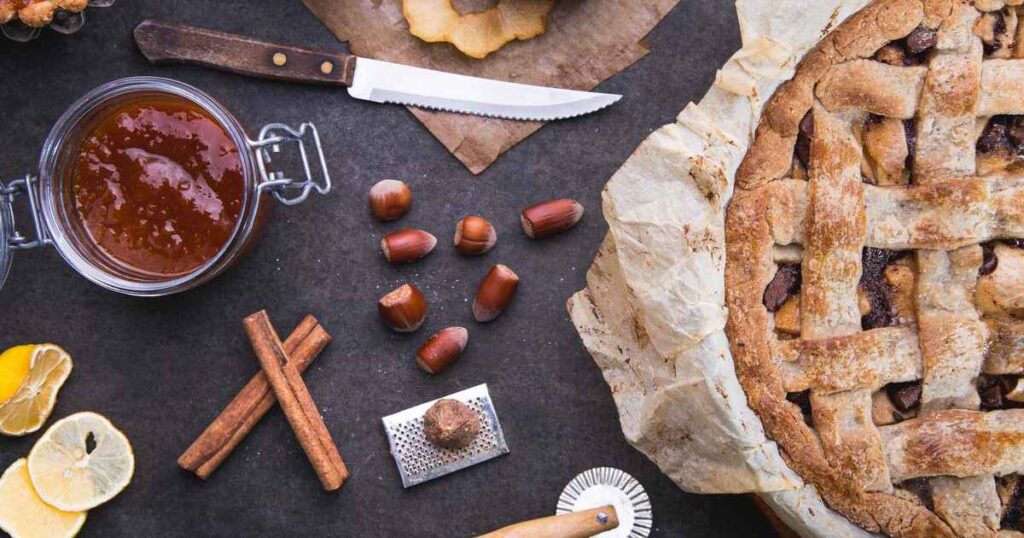
With our pie crust lovingly filled and the flavors dancing in perfect harmony, it’s time to witness the magic unfold as we bake our pie in a cake pan. Baking, a delightful alchemy of heat and time, transforms raw ingredients into a golden-brown masterpiece that entices both the eyes and the palate.
As the cake pan cradles our pie creation, the even heat distribution of the oven ensures that every inch of our dessert receives the warmth it deserves. But here’s the catch – baking a pie in a cake pan may require a slight adjustment to the traditional baking time and temperature.
The baking time may vary since the depth of a cake pan differs from that of a traditional pie dish. Keeping a watchful eye on our dessert is essential to prevent under or overcooking. A trusty toothpick inserted into the center can be a valuable ally in determining the doneness of our creation.
While baking, the enticing aroma of pie and cake fills the air, building anticipation for when our masterpiece emerges from the oven. Patience is critical during this stage, as allowing the pie-in-a-cake to cool adequately ensures that the flavors and textures fully develop.
Once cooled, the final reveal is nothing short of a culinary triumph. The cake pan has proven its versatility, embracing the fusion of pies and cakes with grace and finesse. With each slice carefully served, the combination of flaky crust, luscious filling, and tender cake offers a medley of delights that ignite the senses and invite appreciation from every palate.
So, there you have it – a delicious pie baked to perfection in a humble cake pan. The result of this delightful experiment is a testament to the boundless possibilities of baking, where creativity and passion lead to extraordinary and unforgettable desserts.
So, why not take your baking adventures to new heights and let the cake pan be your canvas for creating sweet marvels that leave everyone asking for seconds? Happy baking!
Decorating and Serving Pie from a Cake Pan
Congratulations! You’ve successfully crafted a delightful pie in a cake pan, and now it’s time to add the finishing touches and savor the fruits of your labor. As with any culinary masterpiece, presentation plays a significant role in enhancing the overall experience. Let’s explore the art of decorating and serving our pie from a cake pan to create a feast for the eyes and the taste buds.
Dressing up the Dessert:
Decorating a pie in a cake pan offers a canvas for creativity. Consider adorning the top with fresh fruit slices, a dusting of powdered sugar, or a drizzle of rich chocolate sauce. You can also go the classic route with a whipped cream dollop or a velvety ice cream scoop. The contrast between the sumptuous filling and the decorative elements will entice your guests before they even take the first bite.
Slicing and Serving:
When it comes to serving the pie-in-a-cake, precision is critical. Use a sharp knife to slice through the flaky crust and moist cake, ensuring that each serving perfectly blends both components. Place the slices on individual dessert plates or rustic wooden boards for an added elegance touch. A sprinkling of fresh herbs or edible flowers can lend a touch of sophistication to the presentation.
Pairing and Accompaniments:
The versatility of a pie in a cake pan opens up a world of beverage-pairing possibilities. Whether you prefer a cup of steaming coffee to complement a decadent chocolate-filled creation or a refreshing iced tea with a fruit-infused pie, there’s a beverage to suit every taste. Additionally, consider offering a side of freshly whipped cream or a scoop of ice cream to further indulge your guests.
Sharing the Love:
Finally, remember that the joy of baking is best when shared. Invite your loved ones to gather around the table and relish the unique fusion of flavors you’ve crafted. The story behind the creation, the joy in every bite, and the laughter shared over dessert will make this culinary adventure all the more memorable.
As you embark on this culinary journey of decorating and serving pie from a cake pan, allow your creativity to shine. There are no strict rules – only your imagination to guide you. So, celebrate the art of baking, where innovation meets tradition, and a simple cake pan transforms into a vessel of endless possibilities. Enjoy every moment of this delicious experience!
Comparison with Traditional Pie Dishes
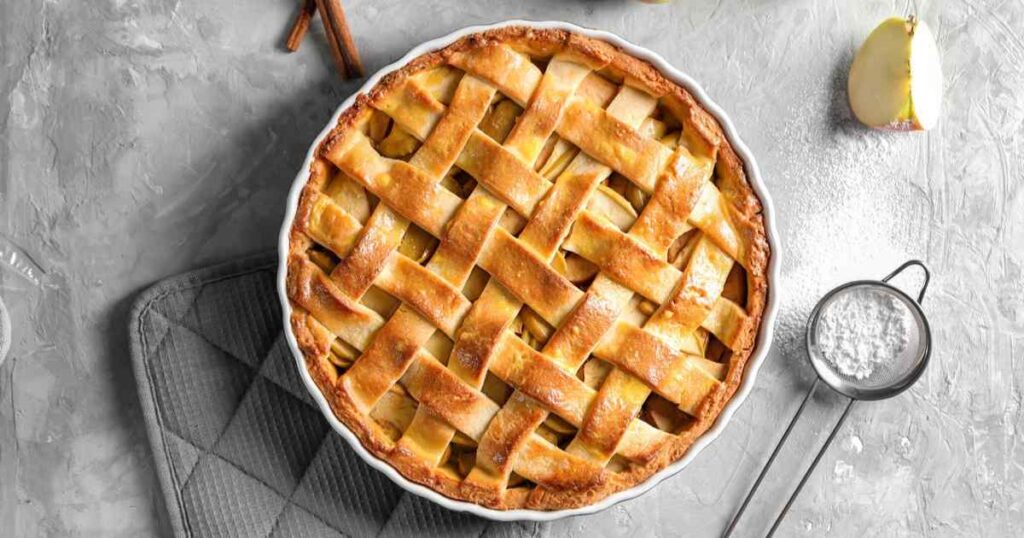
As we bid farewell to our delightful pie-in-a-cake creation, it’s worth reflecting on the journey and comparing the experience of using a cake pan to bake a pie with that of traditional pie dishes. Both methods have merits, and understanding the pros and cons can help you decide which approach suits your baking endeavors best.
Pros of Making Pie in a Cake Pan
Versatility: Using a cake pan allows you to experiment with various pie fillings and crust combinations, giving birth to unique and innovative desserts that defy convention.
Even Slices: A cake pan’s straight sides make achieving even and precise slices easier, ensuring each serving looks as beautiful as it tastes.
Ease of Serving: The flat bottom of a cake pan makes it convenient to serve individual portions directly from the pan, making it an excellent option for casual gatherings or potlucks.
Eye-Catching Presentation: With ample space for decorative elements, a pie in a cake pan can be a showstopper at any gathering, captivating your guests before they take their first bite.
Cons of Making Pie in a Cake Pan
Baking Time Adjustments: Due to differences in depth and material, the baking time for a pie in a cake pan might vary from that of traditional pie dishes, requiring careful monitoring to avoid over or undercooking.
Crust-to-Filling Ratio: The proportions of crust to filling may differ from those of traditional pie dishes, affecting the overall taste and texture of the dessert.
Storage and Transportation: Pies baked in enclosed pie dishes and cake pans need covers, which may pose challenges when storing or transporting the dessert.
Pros of Traditional Pie Dishes
Specific Design: Traditional pie dishes are designed for baking, ensuring the correct depth and dimensions to seamlessly accommodate the filling and crust.
Uniform Baking: The material and design of pie dishes facilitate even heat distribution, promoting uniform baking throughout the pie.
Ease of Handling: The handles or fluted edges on traditional pie dishes offer a convenient grip, making it easy to transport the pie from oven to table.
Cons of Traditional Pie Dishes
Limited Creativity: Traditional pie dishes may limit creativity, as they are tailored for specific pie sizes and styles, leaving less room for experimentation.
Less Space for Decoration: The sloped sides of traditional pie dishes may restrict the space for decorative elements on top of the pie.
Choosing between a cake pan or a traditional pie dish depends on your baking preferences and the type of pie you wish to create. Whichever route you take, the joy of baking lies in the journey of culinary exploration, where every slice becomes a testament to the boundless possibilities of the oven and the heart of a passionate baker. Happy baking!
Frequently Asked Questions
Can you use a glass cake pan for the pie?
Yes, you can use a glass cake pan for pie. Glass pans are suitable for baking tarts as they provide even heat distribution and allow you to easily monitor the crust’s browning.
Can I use a round cake pan as a pie pan?
Yes, you can use a round cake pan as a pie pan. While the shape is different, a round cake pan can still hold the pie crust and filling, producing a delicious pie with a unique appearance.
Can you bake a pie in a pan?
Yes, you can bake a pie in a pan. A cake pan or a traditional pie dish can be used to bake pies, offering flavor combinations and presentation versatility.
What pan can I use for pie?
You can use a variety of pans for baking pies, such as cake pans, glass pie dishes, ceramic pie plates, or metal pie tins. The choice depends on your baking preferences and the desired outcome.
Is a baking pan the same as a cake pan?
While baking and cake pans are used for baking, they may differ in material, size, and shape. Cake pans are typically shallower and come in various forms, while baking pans can be more profound and have a more comprehensive range of uses for various baked goods.
Conclusion
Embrace the art of culinary experimentation and let your baking creativity soar as you explore the delightful world of making pies in a cake pan. The journey from crafting the perfect pie crust to infusing delectable flavors into the filling and finally presenting your masterpiece is a testament to the boundless possibilities of the oven and the heart of a passionate baker.
Whether you opt for a classic pastry crust or a playful graham cracker base, whether you serve it with a dollop of whipped cream or a drizzle of chocolate sauce, the fusion of pies and cakes in a cake pan promises a delightful experience for both the eyes and the taste buds. So, don your apron, ignite your imagination, and embark on this delicious adventure of pie-in-a-cake baking. Happy baking and bon appétit!

